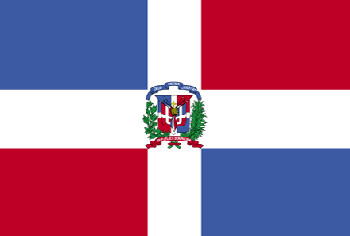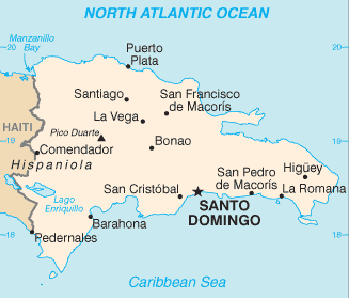|
NAME: República Dominicana
Country
named the Spanish of Domingo (Sunday; i.e., the Lord's Day).
POPULATION: 9,800,000
(2008)
ETHNIC
GROUPS: Mulatto
(73%); white (16%); black (11%)
CAPITAL:
LANGUAGE: Spanish
(official)
RELIGION: Roman
Catholicism (95%)
LIFE
EXPECTANCY: 2008:
men, 71; women, 75
LITERACY: 1997:
66%; 2007: 67%
GOVERNMENT: democratic
republic
President: Leonel Fernández Reyna
ECONOMY: Tourism,
sugar processing, nickel, gold, textiles, cement, tobacco
MONEY: Peso
(DOP); 1997: 33.1 = $1.0 USD
GEOGRAPHY: Mountains,
valleys, coast
INTERNET CODE: .do
HISTORY:
600 Native
inhabitants called Taínos settled the
1492 Hispaniola
(and
Native
population in 1492: 500,000.
December
24-25:
1520 Native
population: none.
1697
1821 The
Spanish two-thirds of the island, known as
1822
1844
1861-1863 The
Dominican Republic peacefully returns to the Spanish Empire without war.
1863-1865 The
Dominican Republic wins war of independence from
1930-1961 Dictatorship
of Rafael Leonidas Trujillo.
1962 Juan
Bosch elected president.
1963-1965 Military golpe de estado deposes Bosch.
The military
establishes a military dictatorship.
A
civil war begins in the
1965 The
1966-1996 Joaquín Balaguer is
elected president many times.
1996-2008 Leonel Fernández Reyna
elected president to two two-year terms.
GOVERNMENT: Constitutional
Democratic Republic, Representative Democracy
PRINCIPAL
MEMBERS OF INTELLIGENTSIA:
Julia
Alvarez (novelist, poet, essayist). She was born in 1950 in

